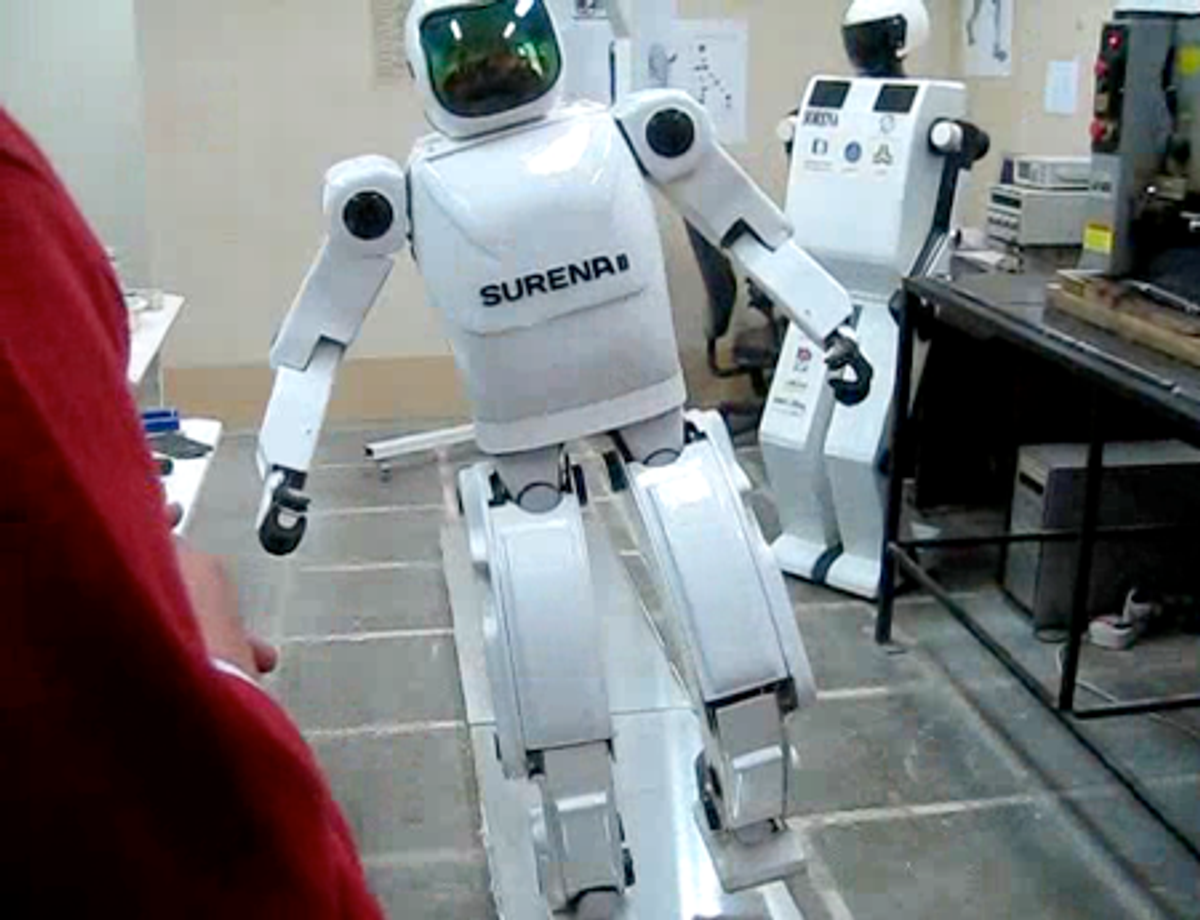Iranian researchers at the University of Tehran unveiled last month an adult-size humanoid robot called Surena II.
Initial press reports by Iran’s official news agencies didn’t include a lot of details about the robot, saying only it could “walk like a human being but at a slower pace,” as well as perform some other tasks, and questions surfaced about the robot’s real capabilities.
Now IEEE Spectrum has obtained more details about Surena and exclusive images and videos showing that the robot can indeed walk—and even stand on one leg.
Aghil Yousefi-Koma, a professor of engineering at the University of Tehran who leads the Surena project, tells me that the goal is to explore “both theoretical and experimental aspects of bipedal locomotion.”
The humanoid relies on gyroscopes and accelerometers to remain stable, and although it still moves its legs slowly, Professor Yousefi-Koma says his team is developing a “feedback control system that provides dynamic balance, yielding a much more human-like motion.”
Surena II, which weighs in at 45 kilograms and is 1.45 meter tall, has a total of 22 degrees of freedom (DoF): The legs have each 6 DoF, the arms 4 DoF, and the head 2 DoF. An operator uses a remote controller to make the robot walk and move its arms and head. The robot can also bow.
Surena doesn’t have the agile arms of Hubo, the powerful legs of Petman, or the charisma of Asimo, but this is only the robot’s second generation, built by a team of 20 engineers and students in less than two years. The first version of the robot, much simpler, with only 8 DoF, was demonstrated in late 2008.
Professor Yousefi-Koma, who is director of both the Center for Advanced Vehicles (CAV) and the Advanced Dynamic and Control Systems Laboratory (ADCSL) at the University of Tehran, says another goal of the project is to “demonstrate to students and to the public the excitement of a career in engineering.”
For the next generation of the robot, the researchers plan to develop speech and vision capabilities and improve the robot’s overall mobility and dexterity. They also plan to give Surena “a higher level of machine intelligence,” Professor Yousefi-Koma says, “suitable for various industrial, medical, and household applications.”
The robot was unveiled by Iranian President Mahmoud Ahmadinejad on 3 July in Tehran as part of the country’s celebration of “Industry and Mine Day.” The robot is a joint project between the Center for Advanced Vehicles and the R&D Society of Iranian Industries and Mines.
Below, a demo the researchers gave on Iranian TV and more photos.
Photos and videos: University of Tehran/Center for Advanced Vehicles
Erico Guizzo is the Director of Digital Innovation at IEEE Spectrum, and cofounder of the IEEE Robots Guide, an award-winning interactive site about robotics. He oversees the operation, integration, and new feature development for all digital properties and platforms, including the Spectrum website, newsletters, CMS, editorial workflow systems, and analytics and AI tools. An IEEE Member, he is an electrical engineer by training and has a master’s degree in science writing from MIT.






